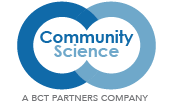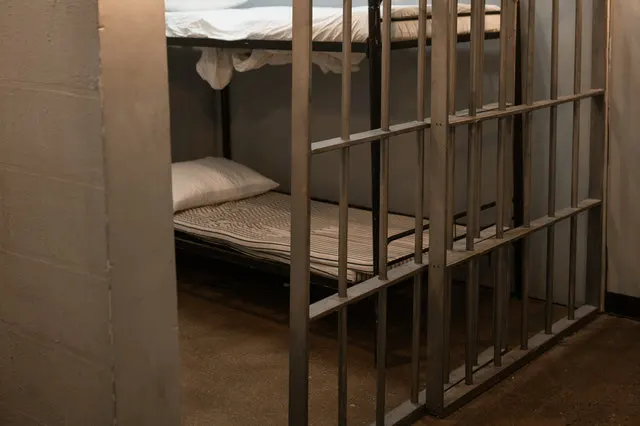There was a historic increase in homicides in US cities between 2019 and 2020, according to a report by the National Commission on COVID-19 and Justice. This increase was disproportionately experienced in Black communities across our country. In an examination of 27 US cities, the Washington Post found that violence disproportionately rose in predominantly Black communities across the country compared to predominantly White communities. Predominantly Black Baltimore saw a nearly 5% reduction in homicides in 2020 from its already high level in 2019, while the surrounding Baltimore County, largely White and wealthier, experienced a 30% decline over the prior year. This condition in Black communities should be no more tolerable than the police officers in the media on the man’s neck, but it has been historically acceptable. We need to come together to change the systems that contribute to the disproportionate violence in our Black communities as much as we need to change the system that enables excessive force by police.
Being tough on crime is not a solution
Politicians compete for who can appear more tough on crime. The emotional appeal and ease of being tough on crime is understandable, and the media has done a lot to exploit that. However, if we apply science to address this social injustice, it leads us to take a public health approach that seeks to change the systems and environments that create violence. Social and medical science has demonstrated that if there are the perceptions and realities of inequitable access to economic and other opportunities, particularly for young Black men, violent and other crimes will dominate their daily lives. The solutions are not simple, but there is the knowledge and experience available to make a dramatic improvement in a relatively short period of time. The existential choice to make in this country is whether we are really willing to do what it takes to make the needed changes in our systems, changes that are proportionate to the complexity and magnitude needed to address the inequities and that have been shown to reduce violence.
A public health knowledge-based approach can make a difference
A public health approach focuses on changing systemic and environmental factors that contribute to crime and violence so that you can make changes at the population level, including preventing young people from going down those dysfunctional pathways as well as giving them the chance to exit such systems safely into a supportive positive community environment. Central to the public health approach is the use of data and scientific research, along with monitoring and evaluation systems, to make sure that the best solutions are being implemented and continuously improved. We need to start with building not only the political will but also the knowledge of what works. The social and medical sciences provide a great deal of evidence as to what works. We need to look at the big picture. A lot needs to be done. The government and philanthropic organizations need to make a serious and coordinated commitment to equitable and effective solutions. The options for research based on promising practices are more than can be covered in this article. But at the core of what is needed is the combination of high levels of community engagement, applying the systemic and scientific basis of public health, strategic and problem-oriented policing practices, economic equity, quality corrections facilities, and sustained support for formally incarcerated citizens.
One of the best examples of how a community can come together to reduce crime has come to be known as the “Boston miracle” of the late 1990s. Just like today, Boston at that time experienced a surge in homicides among young men of color. As a result of its combined law enforcement and public health approach, homicides decreased by 68% in two years through a combination of improved and targeted policing strategies, interagency collaborative problem solving, community leadership and engagement, and a public health approach. The Department of Justice’s Comprehensive Gang Model has successfully used these interventions to reduce serious gang-related crimes across the country. Harvard researcher Anthony Braga and his colleagues, in a
Equitable economic opportunity is essential for addressing the proportion of people living in poverty in a community, which contributes much more to violence than law enforcement practices. Closing the wage and wealth gap between Black and White communities is an important part of the solution. YouthBuild, a national nonprofit, provides education, counseling, and job skills to unemployed young American adults. Say It with Heart, a program in Richmond, VA, is designed to “enhance emotional consciousness, self-awareness, empathy, social and communication skills, character development, self-discipline, skilled management of negative feelings and impulse control.”
A joint program of the Departments of Education, Justice, and Health and Human Services—the Safe Schools/Healthy Students Initiative—uses local mental health experts, juvenile justice officials, and law enforcement to create violence prevention programs and has resulted in fewer students witnessing violence, increased school safety, and an overall decrease in violence in communities where the program exists.
Changes in criminal justice and law enforcement systems also need to be made. Community Science is working with the American Psychological Association in support of its Presidential Task Force on Police Violence against African-American. We are helping them work with the group of experts to recommend evidence-based and promising practices that can be recommended by the association to the current administration for national police reform.
Violence is never acceptable, and accepting disproportionate violence in some communities more than others is disgraceful. Feeling safe in your home and on your streets is a basic human right. Our outrage over racial injustice must include all the disproportionate violence that Black communities face. We have scientific knowledge to guide us and need political will to take us there.
Systems and environments breed violence
Research has demonstrated that focusing on violent offenders and gangs is essential, but it’s the poor quality of life, the sense of hopelessness, and the inequitable access to what will make us thrive that brought about this crisis in Baltimore in other cities. Law enforcement and other criminal justice strategies, such as problem-oriented community policing, are critical as well, but if the political, educational, economic, health, and legal systems are not supportive of the well-being of disenfranchised residence, then research shows that the best we can expect is scratching the surface. While some crime can go down, other crimes and abuse can continue. That is part of why the drug trade is separate from violent crime. Opioids, alcohol, and other substances will continue to ruin way too many lives regardless of the violence level in our streets. Social and political segregation will create continued conflicts. Residents will continue to fear walking the streets, and merchants will still have to worry about who comes into their stores. Businesses will still be reluctant to invest in the community.
There are no simple or singular solutions to these problems. They are complex. It is trite to say that government cannot do it alone, but what that doesn’t say is that nothing can be done unless residents of all communities are part of that change process. Community and other social organizations can be mobilized into action, and with the proper support, they can expand and maintain their effort to improve neighborhood conditions and to engage in the improvement of our public systems. Researchers have shown that the engagement of residents in collective action leads to a sense of collective efficacy. University of Chicago and Harvard University researchers have demonstrated that low-income neighborhoods with a higher sense of collective efficacy had lower rates of community and family violence as well as other benefits
If we are going to be smarter on crime, then we are going to have to recognize that it’s going to take a village to address those powerful factors that bring down our city and its people and strengthen those things that build us up. We are also have to use our brains and scientific knowledge and not our fears and biases as guiding our actions against this national disgrace.
Photo by RODNAE Productions from Pexels

